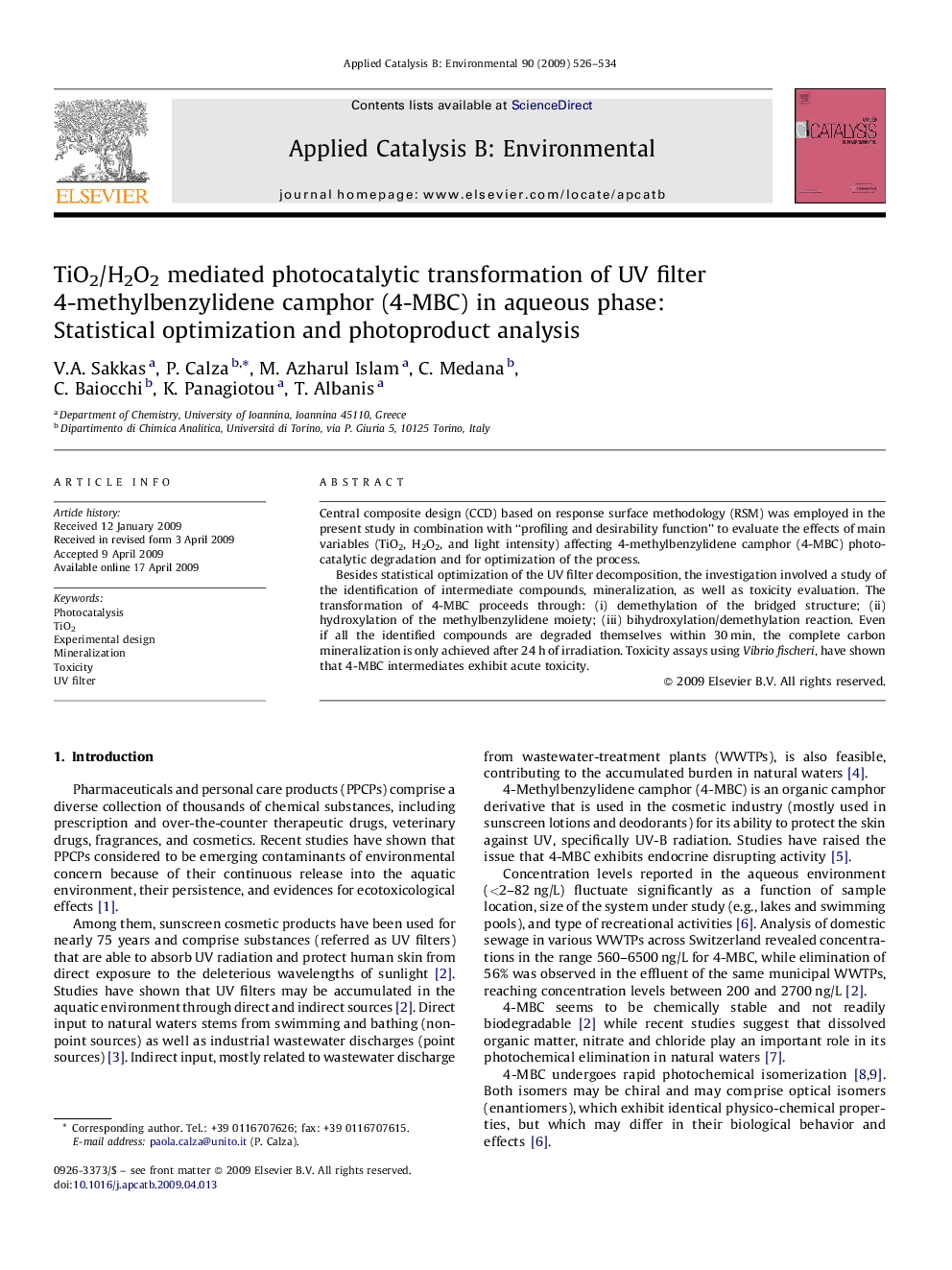| Article ID | Journal | Published Year | Pages | File Type |
|---|---|---|---|---|
| 47661 | Applied Catalysis B: Environmental | 2009 | 9 Pages |
Central composite design (CCD) based on response surface methodology (RSM) was employed in the present study in combination with “profiling and desirability function” to evaluate the effects of main variables (TiO2, H2O2, and light intensity) affecting 4-methylbenzylidene camphor (4-MBC) photocatalytic degradation and for optimization of the process.Besides statistical optimization of the UV filter decomposition, the investigation involved a study of the identification of intermediate compounds, mineralization, as well as toxicity evaluation. The transformation of 4-MBC proceeds through: (i) demethylation of the bridged structure; (ii) hydroxylation of the methylbenzylidene moiety; (iii) bihydroxylation/demethylation reaction. Even if all the identified compounds are degraded themselves within 30 min, the complete carbon mineralization is only achieved after 24 h of irradiation. Toxicity assays using Vibrio fischeri, have shown that 4-MBC intermediates exhibit acute toxicity.
